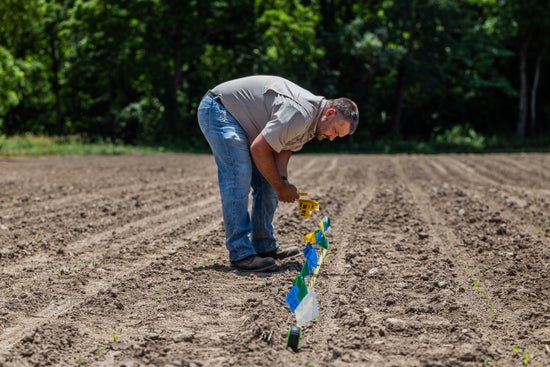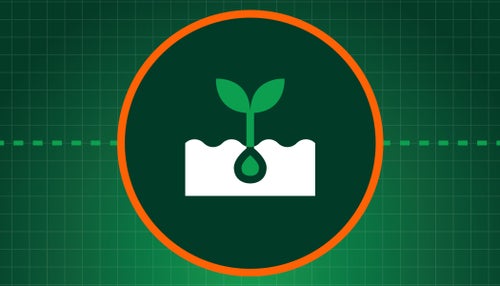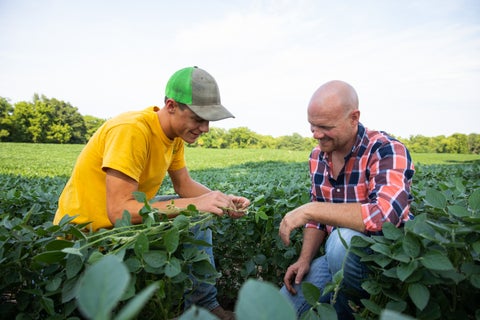
Crop emergence flagging is a common practice in agronomy to mark the locations where seeds or plants have been sown in a field. This is especially useful for monitoring crop emergence, assessing plant population density, and ensuring uniform plant distribution. Here's a basic guide on how to use emergence flagging in agronomy:
How to Flag
1. Before Flagging:
- [Select the Right Flags] Choose flags that are highly visible and durable. Bright colors like green, blue, yellow, and red are often preferred. Make sure the flags are tall enough to be easily seen in the field.
- [Make a Plan] Know where you want to do your testing. After planting, measure off a section of a row to flag, we recommend 1/1000th of an acre. Below are common row width conversions for reference:
| ROW WIDTH | 38 | 36 | 30 | 22 | 20 | 19 | 15 |
| LENGTH | 13' 9" | 14' 6" | 17' 5" | 23' 9" | 26' 2" | 27' 6" | 34' 10" |
- [End Flags] Place white flags at the boundaries of your measured out section.
- [Row Marker] Use large flags at the end of the row to quickly find your plot throughout the growing season.
TIP: Drop a pin in a maps app on your phone and set a reminder to come back to this spot before harvest.
2. Time to Flag:
- [Download Worksheet] Download a corresponding worksheet for each plot you have to keep track of your flags. This worksheet allows you to compare all season long right up to yield differences at harvest.
- [Days 1-4+] Place a green “DAY 1” flag next to any visibly emerged plants, record the total number of Day 1 flags placed on your worksheet. Come back to your flat plot 24 hours later and mark any new emergence with blue "DAY 2" flags. Continue this process for DAY 3 and DAY 4+ to complete your flagging.
3. Monitoring:
- [Keep Evaluating] Periodically visit your flag test location to monitor emergence. If there are issues, you can investigate the cause and take corrective actions to improve emergence for next season.
Compare Yield Differences
Make sure to evaluate the crop you flagged prior to harvesting to see the results of your late-emerged plants. Save your worksheet from flagging for pre-harvest to record ear size, number of pods, number of cotton bolls, or size of beets for each flag, allowing you to compare yield differences.
Emergence flagging is a valuable tool to help you make data-driven decisions to optimize your crop management practices. Use this method to monitor, manage, and improve crop performance throughout the growing seasons.



